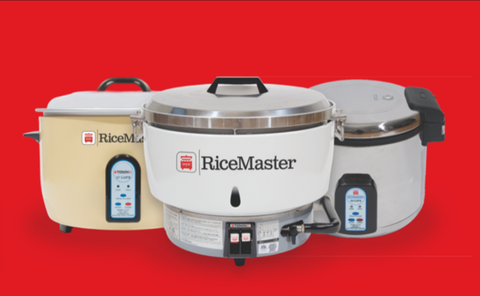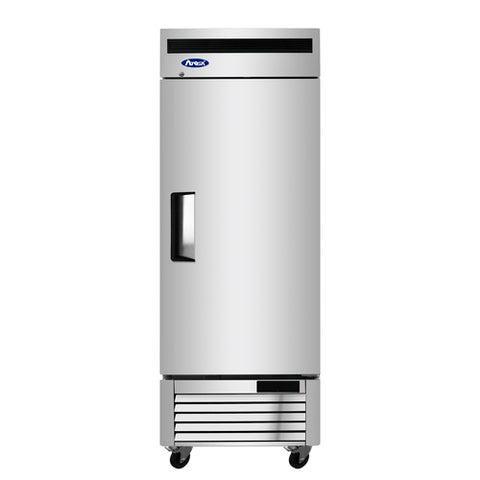
Setting up a commercial kitchen hood can seem daunting if you're unfamiliar with the process. However, when done properly, this essential component ensures a safe, comfortable, and legally compliant kitchen environment. In this guide prepared by the expert staff at Cresco-Resco, we'll walk you through the steps to setting up your commercial kitchen hood.
Step 1: Understand Your Needs and Codes
Before anything else, it's crucial to understand your specific kitchen needs, as well as the building and health codes in your region. Consult with a knowledgeable expert or local authority to ensure that you are selecting the right type of hood (Type I for grease producing appliances, Type II for steam, heat, and odor) and that you comply with all relevant laws.
Step 2: Select the Right Hood
There are various types of commercial hoods, including wall-mounted canopy, island style, and downdraft hoods. The choice largely depends on your kitchen's layout, cooking needs, and the types of appliances used. When in doubt, consult with a commercial kitchen professional.
Step 3: Plan the Placement
A kitchen hood must be installed directly over the cooking appliances, but the exact placement depends on the hood style and the appliances under it. Your local code may specify a minimum and maximum height.
Step 4: Purchase and Preparing the Materials
Once you've chosen your commercial kitchen hood, you need to acquire it along with any necessary installation hardware. This will typically include mounting brackets, screws, ductwork, an exhaust fan, a make-up air fan, and potentially a fire suppression system, depending on local regulations.
Step 5: Install the Hood (We have a full install guide below!)
Begin by marking the area where the hood will be installed. Make sure the hood is perfectly leveled. Use mounting brackets to secure the hood to the wall or ceiling, depending on your design. It's recommended to have a professional or someone with strong DIY skills do this.
Step 6: Install the Ductwork
The ductwork connects the hood to the exhaust fan. This is a crucial part of the installation, as the ducts need to be tightly sealed and properly insulated to prevent fire hazards and heat loss. Ensure the ducts are installed to vent the exhaust air outside of the building.
Step 7: Install the Exhaust Fan
The exhaust fan needs to be mounted on the exterior wall or roof, and connected to the ductwork coming from the hood. Make sure it's installed properly so that it effectively removes smoke, heat, and odors.
Step 8: Install the Make-Up Air System
This is necessary to replace the air being drawn out by the exhaust fan. The make-up air system should also be connected to the hood and may require additional ductwork.
Step 9: Install Fire Suppression System
If required by your local codes, a fire suppression system should be installed within the hood. These systems are designed to automatically release fire extinguishing chemicals in the event of a fire. This process should be done by a certified professional.
Step 10: Inspection and Testing
Once everything is installed, your system needs to be inspected and tested by a certified professional to ensure it's safe and compliant with local codes.
Remember, these are general steps and might vary based on the specific type of hood and local regulations. Always consult with a professional if you're unsure. And never forget, safety should always be the first priority.
Deep Dive into Commercial Kitchen Hood: How to Install a Commercial Kitchen Hood?
In the process of setting up a commercial kitchen, you'll inevitably encounter the need for a commercial-grade ventilation hood. These are essential units designed to extract smoke, vapor loaded with grease, and other airborne contaminants, promoting a healthier kitchen atmosphere and safeguarding the wellbeing of your staff. However, mounting a commercial kitchen hood is a task that shouldn't be attempted without professional assistance. Here's what you need to comprehend about the installation process and why engaging a professional is vital.
Consulting with a Hood Manufacturer
The journey towards installation should commence with a consultation with a professional hood manufacturer. Experts in this field can guide you in selecting the appropriate hood for your kitchen, factoring in aspects like your kitchen's size, your culinary style, and local construction codes and regulations.
Moreover, seasoned professionals can provide insightful assistance in designing a bespoke ductwork system that caters to your unique requirements. Inadequate installation could cause air leakages, compromising the hood's efficiency and potentially creating fire risks. By collaborating with experienced professionals, you can ensure your hood is installed to comply with industry standards and best practices.
Installation Process Expectations
The commercial kitchen hood installation process involves several key steps. Initially, the installer mounts the hood to either the ceiling or wall. Subsequently, they install the ductwork, responsible for channelling air from the hood to the exterior of the building. Depending on your kitchen's design, this might necessitate cutting openings in walls or ceilings.
Once the ductwork is installed, the installer links the hood to the ductwork and mounts any required ventilation fans. Finally, they will test the hood for functionality, making necessary adjustments to ensure optimum performance.
The Importance of Professional Installation
Several reasons make professional installation essential. Firstly, a professional installer has the expertise and equipment necessary to mount the hood safely and accurately, guaranteeing it operates as intended. Secondly, professional installation ensures that your ventilation hood is compliant with local building codes and regulations. Finally, it's a time and cost-efficient choice in the long term as it helps prevent the need for expensive repairs or replacements due to improper installation. Because let's be honest, finding a how-to video on YouTube doesn't equate to actual proficiency in the task!
We walked through the process of setting up a commercial kitchen hood. lets address some additional important questions: cleaning, wiring, installation cost, and compliance with the Americans with Disabilities Act (ADA) in California.
Cleaning a Commercial Kitchen Hood
Keeping your commercial kitchen hood clean is not only a necessity for efficient operation, but also a safety measure to prevent fire hazards.
-
Turn Off the Power: Always start by turning off the power to the hood system and covering the appliances underneath to protect them.
-
Remove Filters: Most kitchen hoods have removable filters. Slide or pop these out according to the manufacturer's instructions.
-
Soak and Scrub Filters: Soak the filters in a mix of warm water and a non-corrosive degreaser. After soaking, scrub them gently using a non-abrasive brush.
-
Clean the Hood: Using a degreaser, clean the interior of the hood. Start from the top and work your way down, ensuring all grease and grime is thoroughly removed.
-
Rinse and Dry: Rinse the filters and the hood interior with warm water and dry them thoroughly.
-
Reinstall the Filters: Once everything is clean and dry, reinstall the filters.
The frequency of cleaning depends on how heavily the kitchen is used, but at a minimum, it should be done quarterly.
Wiring a Commercial Kitchen Hood
Wiring a commercial kitchen hood requires a good understanding of electrical systems. If you're not confident, it's best to hire a professional. Here's a simplified overview:
-
Turn Off the Power: Start by turning off the power to avoid any electrical accidents.
-
Route the Wiring: Route the hood wiring from the circuit breaker to the hood location.
-
Connect Wires: Connect the hood wires to the power source. Typically, the black wire is the hot wire, the white is neutral, and green or bare is ground. Always follow the manufacturer's instructions.
-
Test: Turn the power back on and test the hood to ensure it operates correctly.
Remember, working with electrical systems can be dangerous. Always hire a professional if you're not confident in doing the work.
Installation Cost for Commercial Kitchen Hood
The cost to install a commercial kitchen hood varies greatly depending on the size, type of hood, ductwork complexity, and whether there is a need for a make-up air system or fire suppression system. On average, you can expect to pay between $1,000 to $3,000 for the hood itself, and between $2,000 to $10,000 for professional installation. Remember, it's important to factor in the costs of regular cleaning and maintenance as well.
ADA Compliance for Commercial Kitchen Hoods in California
The ADA does not have specific rules about commercial kitchen hoods as they are typically not in areas accessible to the public. However, if your kitchen has areas where employees or guests with disabilities need access, you must comply with the ADA guidelines. This could involve ensuring proper wheelchair accessibility and maintaining appropriate aisle spaces, among other requirements. Always consult with a local ADA expert to ensure full compliance.
Remember, these are just general guidelines and may vary based on local codes and regulations. Always consult with a professional if you're unsure. Safety should always be the first priority in a commercial kitchen.












Comments (2)
No, Class 1 hood exhaust (used for grease and smoke-producing cooking equipment) must be exhausted through the roof — not through a back wall or side wall — according to NFPA 96 standards.
Source:
NFPA 96 – 2021 Edition
Section 7.8.2.1:
“Exhaust from the hood shall be discharged to the outdoors in accordance with Section 8.1 and shall not be discharged into attics, crawl spaces, or areas inside the building.”
Section 8.1.1.1:
“The termination of exhaust ducts shall be in accordance with Section 8.2 and shall be located so that the exhaust does not re-enter the building or any other building.”
Section 8.2.1:
“Exhaust outlets shall be located so that the exhaust discharges vertically and shall be arranged with the discharge opening a minimum of 40 inches above the roof surface.”
Summary:
NFPA 96 mandates vertical discharge of Class 1 hood exhausts through the roof, specifically to safely disperse grease-laden vapors and prevent fire hazards. Horizontal discharge through a wall is prohibited for Class 1 hoods unless an AHJ (Authority Having Jurisdiction) explicitly approves an engineered alternative — which is rare.
If you’re working on a project, We recommend reviewing the full NFPA 96 standard (accessible via NFPA.org) or checking with your local fire marshal or building department for enforcement specifics.
Can we direct Class 1 Hood exhaust through back wall rather than roof?